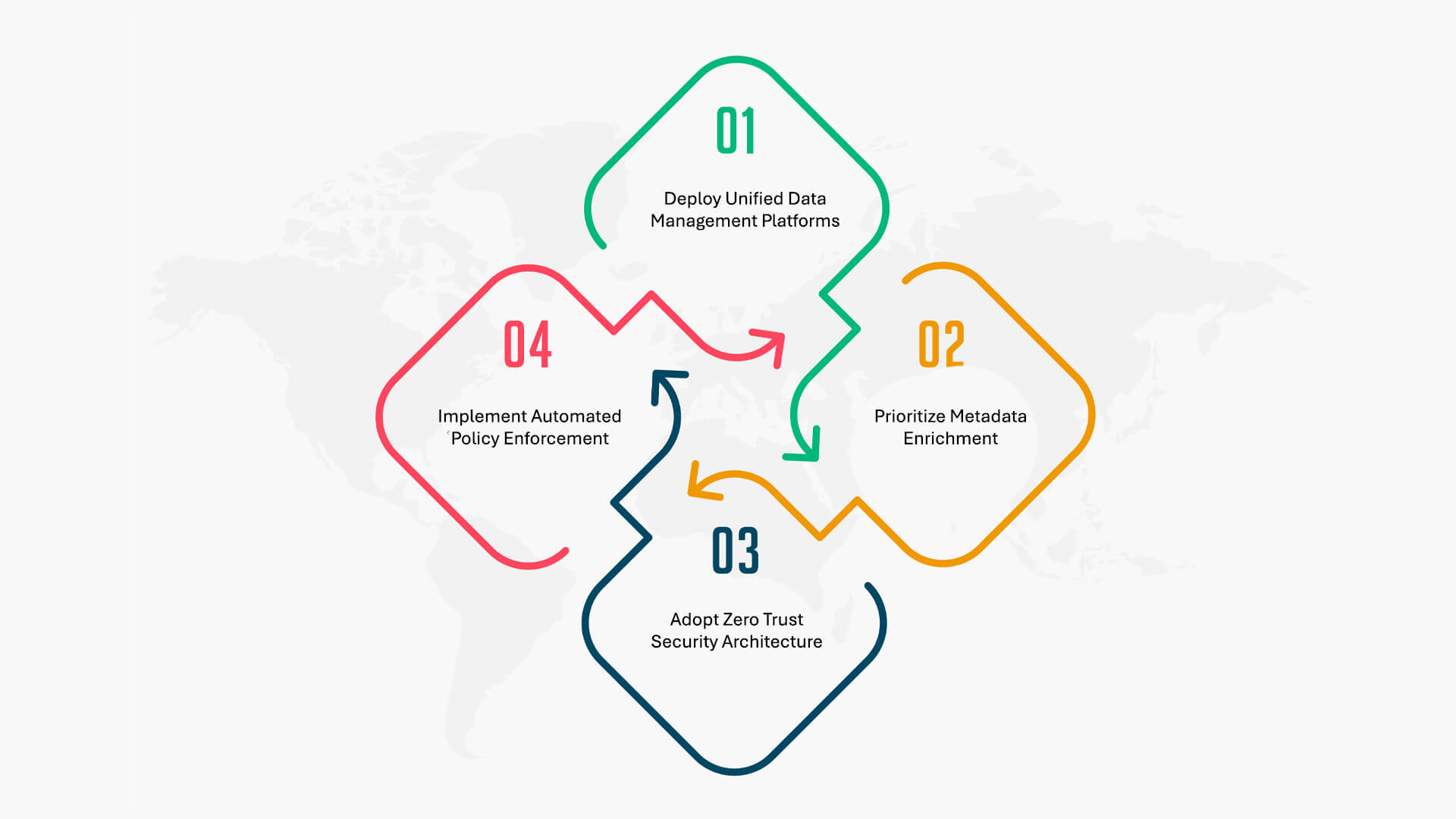In 2025, artificial intelligence has become more than an enabler—it’s infrastructure. AI systems drive decisions in healthcare diagnostics, financial risk modeling, urban planning, military operations, and public governance. And just like ports, power grids, or satellites, this infrastructure must be sovereign. The debate isn’t just about using AI. It’s about controlling the intelligence that will shape your nation’s destiny.
From Cloud to Control: The New Sovereignty Crisis
Over 140 countries have introduced data localization or sovereignty mandates in the last decade, trying to assert control over their digital assets. But while these laws aim to contain data within borders, the real challenge lies deeper: in the algorithmic interpretation of that data.
AI doesn’t simply store and process information—it infers, prioritizes, recommends, and in many cases, acts. When that intelligence is hosted on foreign infrastructure, trained on foreign datasets, and tuned to foreign regulatory assumptions, sovereignty becomes a mirage.
Imagine a national healthcare system using an AI model trained primarily on Western datasets. Will it correctly diagnose symptoms in Southeast Asian populations? Can it understand the nuances of traditional medicine in the Middle East? Will it comply with local consent norms? The answer, increasingly, is no.
What we’re witnessing is not just a technological mismatch—it’s an erosion of algorithmic self-determination.
Why Sovereign AI is a Strategic Imperative
Sovereign AI means more than building models within national borders. It’s about full-stack autonomy—owning the data, the infrastructure, the training logic, and the governance. This shift is no longer theoretical.
- Saudi Arabia announced a $100 billion sovereign AI initiative, launching “Project Transcendence” and backing “Al-Mujadilah,” a national AI model powered by local infrastructure and tailored to Arabic linguistic nuances.
- India is training BharatGPT using regional data and multilingual frameworks to ensure linguistic inclusivity and regulatory alignment with its DPDP Act.
- France’s Health Data Hub integrates federated learning to preserve patient data sovereignty while enabling collaborative AI.
- The EU’s Gaia-X initiative enforces cloud independence and data sovereignty by design, setting the tone for AI architectures across critical infrastructure.
- China has built its LLMs, banning OpenAI services while investing in Red AI—an ethically guided, ideologically aligned AI built on national policy values.
These aren’t isolated initiatives—they signal a global pivot from borderless innovation to border-aware intelligence.
The Risks of Foreign AI Dependence
Nations that fail to invest in Sovereign AI risk ceding control over their future. Here’s why:
- Loss of Data Control: Public datasets used to train AI models on foreign clouds expose national health, finance, and identity records to international surveillance and misuse.
- Regulatory Gaps: AI systems optimized for one jurisdiction’s laws (e.g., GDPR) may be non-compliant with another’s (e.g., PDPL in Saudi Arabia or the DPDP in India).
- Cultural Misalignment: From automated loan rejections to content moderation, AI that doesn’t reflect local values risks systemic bias and citizen distrust.
- Economic Dependence: Nations relying solely on imported models become digital consumers, not creators, leaving innovation, jobs, and digital IP offshore.
This is a sovereignty crisis not of code, but of cognitive control.
The Case for Decentralized Sovereign AI
The dominant response so far has been centralized sovereignty—national clouds, monolithic models, and government-controlled datasets. But a smarter model is emerging: Decentralized Sovereign AI.
In this framework, sovereignty is operationalized at the edge, closer to the data creators and domain experts. It combines:
- Federated Learning: Enables institutions, like banks or hospitals, to train AI locally without exposing raw data.
- Blockchain-Based Provenance: Ensures transparency, immutability, and auditability of training data.
- Edge AI: Embeds intelligence into local devices or servers, ensuring compliance and contextual accuracy in real time.
This distributed model doesn’t weaken sovereignty—it scales it.
What Happens When Sovereign AI Works
Getting Sovereign AI right isn’t just a patriotic exercise—it’s a multi-dimensional accelerator for national progress. Here’s what success looks like:
- Regulatory Agility: Systems adapt to local privacy mandates like HIPAA, PDPL, or DPDP dynamically, enabling compliance by configuration, not code overhaul.
- Cultural Resonance: AI models speak the local language—literally and metaphorically—enabling services that understand dialect, tradition, and behavioral nuance.
- Economic Upside: A national AI ecosystem fosters innovation, job creation, and digital exports. Think of sovereign AI as a digital manufacturing hub, with IP as the product.
- Geopolitical Resilience: In an era of rising digital sanctions and cyber conflicts, decentralized sovereign AI ensures continuity of national intelligence even when global supply chains are disrupted.
The Hidden Complexities of Achieving Data Sovereignty
While the idea of data sovereignty—keeping data within national control—seems straightforward in theory, the path to realizing it is anything but. In practice, governments and enterprises encounter deeply embedded structural, technical, and regulatory challenges that make implementation far more complex than policy mandates suggest.
One of the most pervasive issues is data fragmentation. Across most nations, data is distributed across multiple public institutions, private contractors, and local jurisdictions, often in incompatible formats and stored on disparate systems. Ministries of health, finance, education, and defense may each operate in silos, using legacy systems that were never designed for interoperability. This lack of integration limits the ability to create national data lakes or real-time analytics pipelines necessary for training sovereign AI models.
Closely tied to this is the lack of standardization. Without uniform taxonomies, ontologies, and metadata tagging protocols, even structured data becomes difficult to harmonize, and unstructured data remains largely ungovernable. The absence of consistent classification frameworks across agencies means that data cannot easily be pooled, queried, or validated at scale. This hinders both AI model training and downstream applications such as predictive analytics or policy simulations.
Then come the security and privacy concerns. Government-held data is often among the most sensitive, ranging from national ID databases to defense intelligence and health records. Centralizing or sharing this data to fuel sovereign AI initiatives raises the stakes for cybersecurity. Traditional perimeter-based security models are no longer sufficient; today’s threat landscape demands granular, identity-aware, and context-driven protection. A breach not only compromises individuals but can undermine national trust in digital infrastructure.
Compounding these issues is the regulatory complexity. Many countries now operate in a dual-compliance world: they must enforce their own data protection regulations (such as India’s DPDP or Saudi Arabia’s PDPL), while also aligning with global frameworks like GDPR when engaging in cross-border data flows. Managing these legal obligations across a fragmented data ecosystem requires dynamic, policy-aware systems that can adapt to both national sovereignty and international diplomacy.
From Fragmentation to Federation: Strategic Pathways to Trusted Data Governance

To effectively overcome the structural and regulatory challenges of achieving data sovereignty, nations must adopt strategic and scalable approaches:
- Deploy Unified Data Management Platforms
Implement platforms capable of ingesting, classifying, and managing data across hybrid and multi-cloud environments. These platforms should support federated architectures, enabling distributed control while ensuring centralized visibility, lineage tracking, and secure access.
- Prioritize Metadata Enrichment
Enhance raw data with contextual metadata to improve discoverability, classification, and compliance. Metadata should capture origin, ownership, usage policies, and classification levels—especially crucial for unstructured data governance and AI model accuracy.
- Adopt Zero Trust Security Architecture
Move beyond traditional perimeter-based security. Enforce continuous verification of user identity, device health, and context. Integrate fine-grained access controls, automated risk scoring, and anomaly detection across all data layers to ensure sovereign data protection.
- Implement Automated Policy Enforcement
Utilize AI-driven engines to monitor and apply data policies in real time. This includes enforcing encryption, consent, residency, and retention rules, reducing compliance risk while ensuring dynamic regulatory alignment.
Turning Vision into Execution: The Data Layer is the Battlefield
Declaring AI sovereignty without managing your data is like claiming independence without controlling your borders.
Sovereignty begins at the data layer—how well you see, classify, govern, and act on your data determines how sovereign your intelligence truly is.
That’s where Data Dynamics’ Zubin plays a pivotal role. As an AI-powered, policy-driven software, Zubin enables decentralized governance and control of unstructured data. It ensures:
- Visibility into who owns and accesses what data, across hybrid infrastructures.
- Contextual tagging and classification to drive localized, compliant AI training.
- Role-based controls and audit trails for traceability and accountability.
Zubin doesn’t just help you manage data—it empowers you to turn data into sovereign knowledge assets. To know more about Zubin and try it firsthand, visit – https://www.datadynamicsinc.com/request-a-demo/






